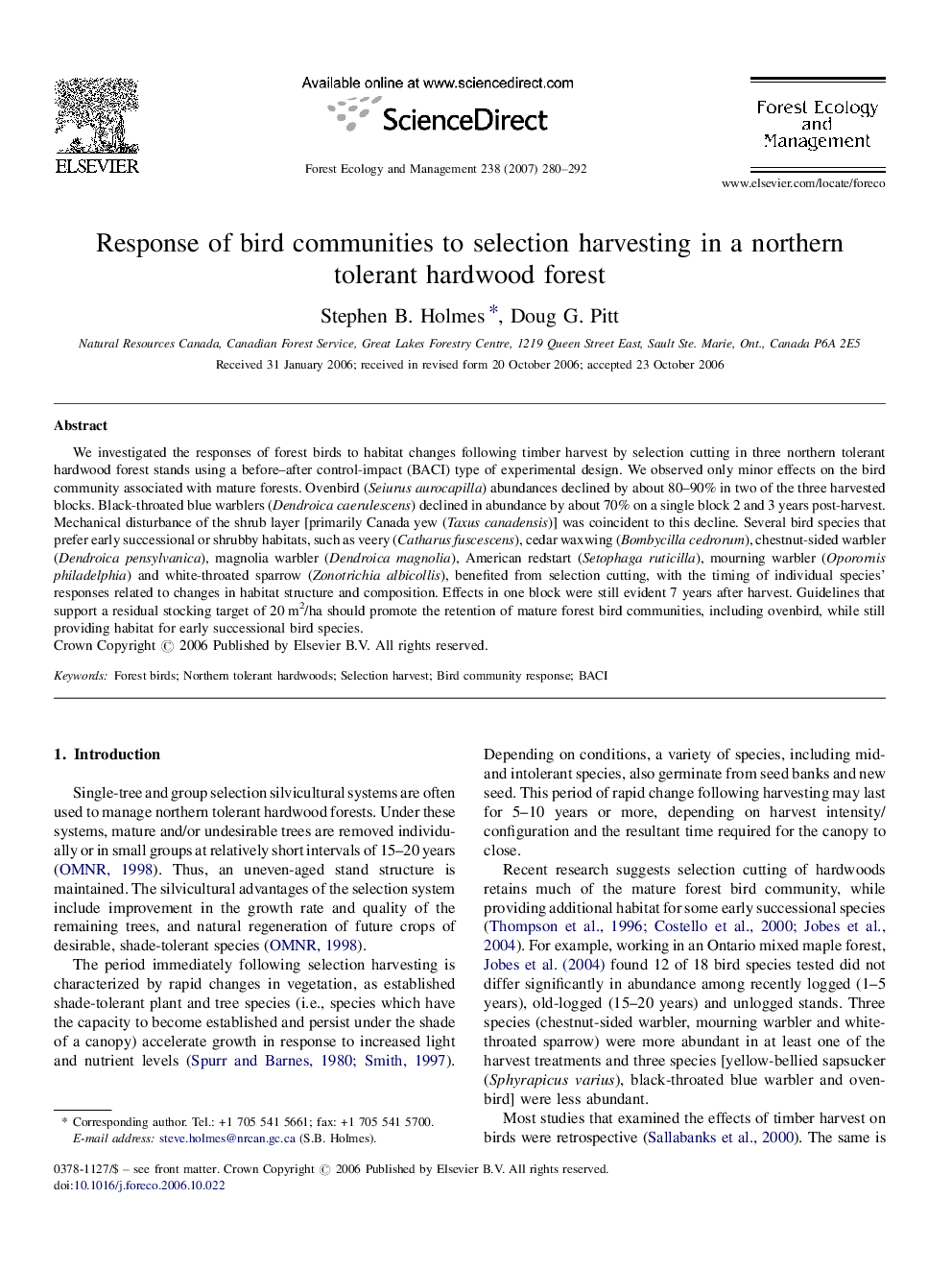| Article ID | Journal | Published Year | Pages | File Type |
|---|---|---|---|---|
| 90258 | Forest Ecology and Management | 2007 | 13 Pages |
We investigated the responses of forest birds to habitat changes following timber harvest by selection cutting in three northern tolerant hardwood forest stands using a before–after control-impact (BACI) type of experimental design. We observed only minor effects on the bird community associated with mature forests. Ovenbird (Seiurus aurocapilla) abundances declined by about 80–90% in two of the three harvested blocks. Black-throated blue warblers (Dendroica caerulescens) declined in abundance by about 70% on a single block 2 and 3 years post-harvest. Mechanical disturbance of the shrub layer [primarily Canada yew (Taxus canadensis)] was coincident to this decline. Several bird species that prefer early successional or shrubby habitats, such as veery (Catharus fuscescens), cedar waxwing (Bombycilla cedrorum), chestnut-sided warbler (Dendroica pensylvanica), magnolia warbler (Dendroica magnolia), American redstart (Setophaga ruticilla), mourning warbler (Oporornis philadelphia) and white-throated sparrow (Zonotrichia albicollis), benefited from selection cutting, with the timing of individual species’ responses related to changes in habitat structure and composition. Effects in one block were still evident 7 years after harvest. Guidelines that support a residual stocking target of 20 m2/ha should promote the retention of mature forest bird communities, including ovenbird, while still providing habitat for early successional bird species.
